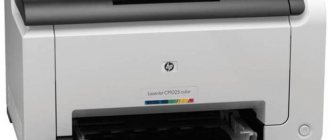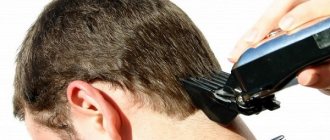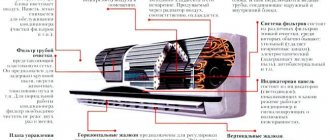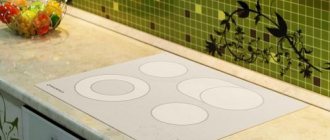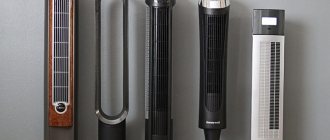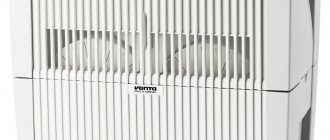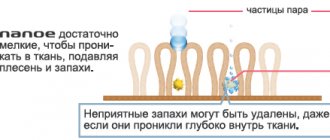These two devices are quite similar to each other, not only in appearance, but also in their operating principle and design features. An ionizer and an ozonizer are equally equipped with electric generators that emit electrical charges, but purify the air in different ways. Many people know only by hearsay about such devices, but not everyone is familiar with their action, not everyone understands the difference between them. What is their difference, what are they intended for? Are they harmful from a medical point of view?
Mode of action of ozonizers
The action of ozonizers is to use the oxidizing abilities of ozone, which, when interacting with bacteria and viruses, can be converted into ordinary oxygen, while neutralizing all harmful substances. Strong electrical discharges from the generator are applied to the tip of a special needle, resulting in the formation of ozone, the saturation of which can be adjusted. Moreover, the greater this power, the higher the ozone concentration will be.
Ozonizer design diagram
An electric ozone generator and ozonizer are capable of destroying at the molecular level:
- Various dirt and dust.
- Viral infections.
- Pathogenic organisms.
- Various microbes.
These devices serve the following purposes:
- Disinfection of surfaces of various objects.
- Removing unpleasant odors.
- Destruction of viruses, microbes.
- Getting rid of moths and bedbugs.
- Water purification.
When considering ozonizers, it should be noted that these devices have, rather, a medical effect. They are successfully used in hospitals, but there are also household devices that purify the air from bacteria and viruses.
It is advisable to turn on the device when there are no people or animals in the room, for about 2-3 hours.
What is better ionizer or ozonizer? Differences between devices
The devices in question are often confused with each other, since they have some similarities both in a technical sense and in terms of the results they produce. Both devices are equipped with electric generators, the task of which is to emit electrical charges. However, devices purify air in different ways.
In ionizers, electrical charges generated by the action of a generator fall on a special plate or filament made of tungsten. Due to this, charged ions are formed. They are supplied in high concentrations into the room, purifying the air.
The structure of ozonizers is based on the high oxidizing properties of ozone. Coming into contact with a variety of bacteria and viruses, it destroys them and turns into ordinary oxygen. The generator built into the device produces high-power electrical discharges, which are fed to a special needle. From its sharp end, the resulting ozone saturates the air. The degree of saturation on devices can be adjusted. As the power increases, the ozone concentration also increases.
Operating principle of ionizers
In these devices, electrical charges generated by a generator are directed to a tungsten filament or a special plate. As a result of this action, new ions charged with an oxygen atom are generated. And the higher the concentration of such ions, the better and fresher the air in the room will be.
How does the ionizer work (diagram)
Such ionizers are designed to improve the quality of airspace. They are not able to destroy microbes and bacteria at their level, as is the case with ozonizers, but they can clean the air well, and also:
- Fight allergens and dust.
- Charge oxygen molecules with ions.
- Protect against viral diseases, preventing microbes from multiplying.
- Remove bad odors.
- Destroy various viruses.
Ionizers are mostly health-improving devices, in contrast to ozonizers that perform disinfecting tasks.
Features of the ionizer and ozonizer
The result of the ionization process is the release of ions with a positive or negative charge that are formed in the air. These tiny particles help settle dust and purify oxygen, simultaneously disinfecting it.
You don’t want to leave rooms treated in this way. The absence of breathing problems is explained by an increase in the quality of the air filling the room. Other positive aspects include:
- strengthening the immune system;
- improvement of well-being and physical condition;
- beneficial effects on health.
The ozonator, which is in demand in many areas of life, confidently leads the competition for the title of best device. The beneficial actions carried out using an ionizer are limited by the ability to nail dust particles to the floor and remove unpleasant odors. Unlike its brother, the ozonizer successfully copes with the function of destroying viruses and bacteria present in the room. What’s important is that it doesn’t take much time. Thanks to the function of disinfecting rooms, the ozonizer is advantageously different from other air purifying devices.
Which is better – an ozonizer or an ionizer?
Many people are confused by the smell of ozone emitted by both devices: they identify them. But in fact, the smell of ozone in ionizers appears as a side effect and in small concentrations. While ozonizers can affect not only microbes, but also the human body. For this reason, it should be used in empty rooms.
Their difference is also manifested in application, namely:
- Ionizers serve more to purify the air. They are capable of emitting up to 10 thousand negative microparticles per second, which is comparable to sea or mountain air. In such an air space you can breathe easier and work more productively. Moreover, they can be turned on regardless of the presence of people in the room. Their action tones the nervous system, relieves stress, and slows down aging.
- Ozonizers are indispensable where there are often sick children who bring various viruses and infections from school or kindergarten. They are good to use when using irritating or allergenic materials in apartment decoration. But it is better to turn on these devices when there are no people in the room.
Ozone is in great demand when it is necessary to get rid of various viruses and bad odors. And ions help improve the quality of clean air. Now, by the way, models of universal properties, so to speak, two in one, have become quite popular.
Such a universal ionizer-ozonizer is capable of producing both ions and ozone. Moreover, according to experts, it is necessary to ionize the air only after it has been purified.
Functional differences between an ozonizer and an ionizer
Ionizers, unlike ozonizers, are not able to destroy germs and bacteria, but they allow you to perfectly clean the air. In addition they:
- fight dust and allergens;
- charge oxygen molecules with ions;
- inhibit the proliferation of microbes;
- eliminate unpleasant odors.
The ozonizer is able to combat:
- viral infections;
- pathogenic organisms;
- various microbes.
Reference! Ionizers are intended primarily for cleansing, while ozonizers perform an excellent disinfection function.
What is the difference between an ionizer and an air ozonizer?
Ionizers can emit up to ten thousand negatively charged ions per second of operation. According to these indicators, the effect of sea or mountain air is created in the room. The device can function regardless of whether people are near it. The action of the device tones the nervous system and relieves stress.
Ozonizers are best used if there are no people in the room. Ozonation devices are excellent in helping where there are sick people. If allergenic products are used as finishing materials, the operation of an ozonator will also be appropriate.
Universal ozonizer-ionizer
The operation of the device is to allow air to enter a special chamber, where it, undergoing a process of decomposition of its elements and purification, is subsequently saturated with ions and continues to clean the room itself. Such universal cleaners have a number of advantages:
- Air purification is carried out continuously.
- Eliminates odors, dust, and any tobacco smoke.
- Air quality and freshness improves.
- There are no filters.
How to use ozonizers correctly
Since ozone is considered a fairly poisonous gas, the use of these devices should be extremely careful. You should not rely on your sense of smell (the smell of ozone has appeared, reminiscent of the “smell of a thunderstorm”), as this already signals a high concentration of gas in the room. It is simply recommended to carry out disinfection using it when there are no people in the room, and then thoroughly ventilate it.
When choosing a household appliance, you should consider:
- Area of its application.
- Performance (for home use, small indicators are enough).
- How long can the device work without interruption?
- Availability of functional additions (timer, selection of operating mode, etc.).
When using it, you must adhere to the rules specified in the instructions for the device, for example:
- It is recommended to install ozonizers above the surface that needs to be treated, or simply on a flat, hard surface to treat the entire space.
- Organize a mandatory flow of fresh air.
- Plug in the power cord, select the mode and operating time of the device.
- After 2-3 hours of operation of the device, be sure to ventilate the room for at least 15 minutes.
How to use ionizers correctly
These devices can be used when people are indoors, and the closer it is installed, the faster its refreshing effect will be felt. Proper care of it is very important, since during operation of the device a lot of dust can settle on it, which must be cleaned off first with a damp and then with a dry cloth.
For more effective operation, you must first thoroughly ventilate the room and only after that (closing all windows) turn on the ionizer.
Who benefits from using home ionizers:
- Children, especially before and during seasonal exacerbations of ARVI, influenza, etc.
- All computer users.
- TV fanatics who spend more than 2-3 hours a day in front of TV screens.
- People who are forced to stay indoors for a long time.
Both the ozonizer and the ionizer fight air pollution, bacteria, fungi, and microbes. But each of them operates according to a different principle, performing specific tasks.
